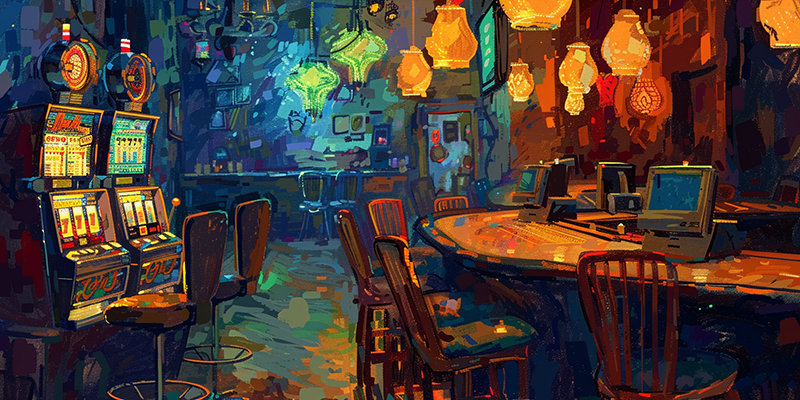Casino or Computer

Cryptocurrency regulation has, so far, focussed on been on the mitigating the risk to speculative investors. But there is a far more important innovation that is embeded into the architecture and design of modern crypto currency. This is what regulators should be looking to better understand.
This article was first published in The Mint. You can read the original at this link, or, if you prefer, listen to me read the article by clicking play below.
Last week, the price of Bitcoin reached a record high. Friends who just a few months ago were boasting about how cleverly they had exited before the crash were now bemoaning the fact that they no longer held crypto.
And then, before the week was out, it lost 7% of its peak value.
This volatility has characterised cryptocurrency trading since Bitcoin first appeared on the scene in 2009. Given its inherent scarcity—there will only ever be 21 million Bitcoins—the smallest shock drives up demand, causing severe price fluctuations. This is why most governments view Bitcoin as a commodity, a risky investment that gullible citizens need to be safeguarded against.
Casino or Computer
In his recent book, Read Write Own, Chris Dixon refers to this as “the casino” aspect of blockchain technology. It is this—the allure of making outsize profits on speculative investments in a scarce commodity—that is the single biggest driver of interest in blockchains today. As a result, this is the aspect of cryptocurrencies that governments are most interested in regulating.
But there is another, far more interesting side to crypto, one that few outside the blockchain world understand. This is what Dixon calls the ‘computer,’ and it is here, he argues, that the real value of blockchain technology lies.
So, what is this ‘computer’ he is referring to? All computers are, he argues, nothing more than “state machines”—devices that store information and can make changes to the ‘state’ of that information. The computers we know and most commonly use are physical devices—laptops, desktops, mobile phones—on which we store information, and, by using various programmes and applications, manipulate that information to generate outcomes. But we also use various forms of virtual computers: state machines that exist solely in software. The best example of this are modern web applications that allow us to both store data and perform complex computations on that data without ever leaving the browser.
A blockchain is another form of a virtual computer—one that runs in a decentralized fashion across a globally distributed network of computers. Bitcoin, the earliest version of the blockchain, was a virtual computer that could only perform a few simple tasks, such as make state changes to a decentralised ledger so that when one user paid another, the amount of cryptocurrency in the payer’s account was reliably reduced by the exact amount that the recipient’s was increased by. However, with blockchains like Ethereum, it became possible for these globally networked virtual computers to do much, much more.
Strong Future Guarantees
Modern blockchains offer strong guarantees for various different transactions. Data is secure, as it is never stored in a single location on the blockchain and transactions are transparent and immutable, since they are recorded on a distributed public ledger. Combined together, these features offer guarantees of future performance that make an openly verifiable blockchain the ideal platform for self-executable contracts across a number of applications.
This is why we can create large decentralized finance platforms that do not depend on trusted intermediaries. And how logistics companies have built complex supply chain management systems that can be used without depending on institutional third parties. And while non-fungible tokens (NFTs) may have waned in popularity, I believe the concept of tokenization that it birthed will eventually reappear in new and interesting ways.
But the most immediately interesting use case of modern blockchain technology is the sufficiently decentralized social media networks that I wrote about in an earlier article in this column. These protocols allow users to interact across federated social networks while still retaining control over their username regardless of the specific platforms they might be using to access the network. What this means is that on blockchain-based protocols like Farcaster, users can now enjoy the sort of network effects that we can otherwise only get on large social media platforms right now, but with none of the lock-in commitment this entails.
Alternative to Regulation
The fact that we have these alternatives is particularly significant today. Regulators are looking for increasingly aggressive ways to clip the wings of Big Tech platforms. In Europe, the Digital Services Act has been enacted to restrict the activities of very large online platforms, while the Digital Markets Act will impose restrictions on gatekeeper entities. Last week, the Indian competition commission announced that it was following suit by working on legislation aimed at digital monopolies.
As I have argued before, laws are particularly ineffective when it comes to controlling fast-moving technologies. What might make more sense would be for us to encourage the use of federated blockchain-based networks which offer the kind of benefits that only Big Tech can currently provide, but with none of the downsides. Rather than looking to laws to constrain the behaviour of existing digital platforms, we would be far better off encouraging users to use these federated alternatives.
Regulators have so far only focused their attentions on the ‘casino’ aspects of blockchain technologies. However, the real benefits of these blockchain networks lie elsewhere. Rather than thinking of the blockchain as a ‘casino’ for virtual tokens that attract speculators, we would do well to ensure that we take greater advantage of the ‘computer’ as well.
